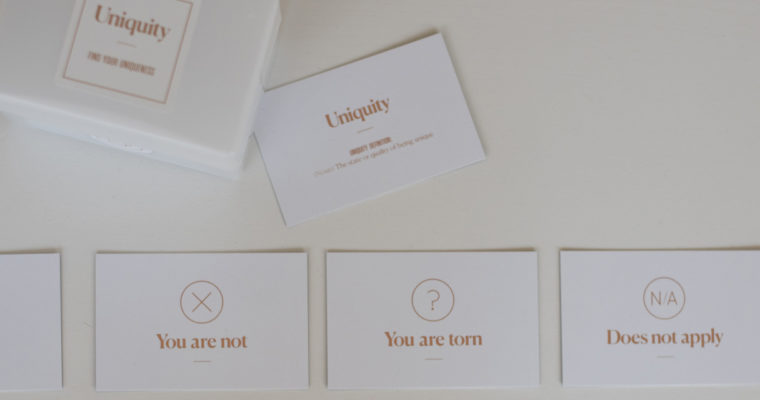How to write a great financial services blog

Believe it or not it’s more than 20 years since the term ‘weblog’ was coined (although nobody’s really sure when the first two letters were dropped). In that time, blogging has become a marketing staple and the internet is now home to about 500 million blogs, with literally countless individual entries. Daunting. Of course, your blog isn’t trying to compete with all of those, in fact it shouldn’t really be about competition at all. Blogging isn’t just about clicks and numbers, especially in finance. It’s important to get your blog noticed, but that’s a topic in itself and all the attention in the world won’t make up for a blog that doesn’t give the reader value. Rather than looking at how to get your blog seen, let’s explore how you can make sure it’s worth seeing. Why are you writing it? Who is your blog aimed at, what does it help with and what would you like your readers to do? As a financial professional you’ll already know the importance of understanding your audience – their attitudes to risk, what interests them and what keeps them awake. All of that should come through in your blog. A great blog asks thought-provoking questions, but also goes a long way to giving the reader the answers. It’s a way to demonstrate your grasp of the full financial landscape and instill confidence in working with you. Here’s a good example from wealth planners Capital Asset Management. Their blog landing page is full of entries that raise and answer practical questions – how to avoid retirement mistakes, why you should watch out for inflation, how to put your kids through university. It’s not that Capital doesn’t use the blog to push their services, they do, but what’s important is the broad spectrum of financial and lifestyle experience they demonstrate. How should you present it? We can boil the types of blog down to seven – ‘how to’, ‘what is’, ‘why you should’, the ‘list’, the ‘curated’, the ‘fun’ and the ‘infographic’. In short, the format you choose will be decided by the points you’re trying to make. List articles are popular and often very useful because they’re easy to follow and they set out key takeaways in numbered points. BOS Invest uses a ‘checklist’ format that manages to be both list and how-to in one. But they’re not the best format for everything. It you’re about to give a data-heavy statistical download to your clients, it might be kinder to use an infographic that shows the top lines in a digestible format. Again, it’s not always appropriate. The nearest thing to a ‘fun’ blog in financial planning might be a team update, including say, job shuffles, an award nomination, charity work and a testimonial. Clearly an infographic or list wouldn’t work here, this kind of blog should read more like a communication from the heart. What should it say? You should absolutely know what it needs to say before you start writing it, otherwise you’ll end up with waffle. Your subject matter can be as broad as you like, as long as there’s always a thread leading back to why it matters and how you can help. Your blog must be relevant, whether it’s up-front or you take a meandering journey that comes back to how the issue relates to your readers. ‘How to’ and ‘why you should’ blogs take a functional question and pick it apart, but blogging is a useful way to demonstrate a wider knowledge and engage the interest of clients in broader topics too. Metis Ireland for example recently produced a series on behavioural biases, the instinctive behaviours that lead us to unconsciously damage our own financial outcomes. Here the goal is to pique interest, demonstrate a broadness of knowledge and crucially, lead the reader to the conclusion that not only does this company know its stuff, it may very well be worthwhile getting in touch. Who’s going to write it? You could write it yourself, after all, it’s your business and your clients – you know them best. If you’re not comfortable writing, you could buy ‘off the peg content’, which is cheap and fast, or use a ‘curated blog’ bringing together links to content on your subject. But these should probably ring alarm bells if you’re interested in quality. The more generic and impersonal your content ‘sounds’, the less likely it is to engage your readers. You’ll be compromising SEO value too, not to mention your own brand voice. The other route is hiring a professional writer, whether a full-time employee or a freelancer. It divides opinion and it’s always a trade off – you know more about your business and clients, but they know how to get it down in writing. Writing is a strange semi-trade to deal with, it’s not like being a lawyer or a doctor, most people in the developed world can write – it’s just that some do it better than others, for a fee. But it’s not just about bashing out 1,000 words and getting it online. Besides helping to develop or stick to your tone of voice, a professional writer will also know about structure and flow. They’ll take your subject and turn it into a narrative that sets out a problem and a solution. It still gives your reader useful information, but it also paints you in the best possible light and keeps SEO in mind too. Where should it go? Writing a blog and then putting it on the website with no further strategy is like opening the window and shouting into the street. Passers-by might hear you, or they might not. A smart blog strategy weaves your content into your marketing plan. One approach is well illustrated by Citywide Financial Partners with their guide to keeping both your personal and business finances in order. Citywide spotted a tendency for business owners to neglect personal financial planning, so they wrote a report on the subject, structured in a way that also worked as a series of blogs.
The three words you need to know about your business

‘Omne trium perfectum’ – it’s a Latin phrase that translates as ‘things that come in threes are perfect’, the phrase even has three words. There’s something special about the number three and in language it manages to convey brevity, energy and expertise in a pleasantly rhythmic and memorable fashion. It’s used in marketing, films and book titles – there’s no ‘Two Musketeers’ or ‘Four Amigos’ and ‘The Very Big Lebowski’ is oddly jarring. Even if the three words are actually short phrases, like eBay’s ‘See it, Love it, Buy it’, there’s a satisfying snappiness to it. It’s not a new thing either, the tripartite motto ‘Liberté, Égalité, Fraternité’ has been around since the French Revolution and Julius Caesar was doing his ‘Veni, Vidi, Vici’ bit long before that. But you can use the power of three inwardly too. While it’s great to be able to explain what you do to others in three catchy words, it’s just as useful to be able to distil it in your own mind and in the minds of everyone who works for you. Before anybody else can know you, you need to know yourself. Here’s how to do it. What do you do again? If you’re running a business, you’re likely to be: a) Very enthusiastic about your offering. b) Absolutely certain that you understand the intrinsic value and processes of whatever it is that you do. Sadly you may find that you’re also: c) Strangely unable to articulate any of this should someone spontaneously ask you in the lift d) Missing business opportunities because of c). It’s really frustrating – that’s why the concept of the ‘elevator pitch’ came along in the first place. How many business opportunities have been lost over the years simply because someone was unable to string together a punchy sentence on cue? But even an elevator pitch, or a 90-second pitch, or any of those marketing tools can be pared down further. To truly know your business, what it stands for, why it’s different and crucially, what it should convey in everything you do in future, you must be able to get it down to three words – more specifically, three adjectives. Seeing it in the cards At Uniquity, we’ve developed a tool to help you do exactly this. Sometimes when you’re far along the line of building your business, it’s hard to find your way back. You need to force yourself to do it – retrace your steps and remember what you originally set out to do. Which three words set out the basic values that you hold most dear? In our handy pack of cards, you’ll find the means to help you. You’ll start with the four cards marked ‘You are’, ‘You are not’, ‘Does not apply’ and ‘You are torn’. The rest of the pack is filled with adjectives that you can set out beneath these four headings. When you have a list of all the things that you are, it’s time to start whittling them down until you have the three completely indispensible ones – the three words that describe your brand and set your ethos out. If you’re struggling, you can get it down to a couple of sets of three, or more, then ask other people in your company to vote for their favorite triptych. Getting your employees behind your values is a key part of making them work, so if there’s any uncertainty at this point about the three magic words you’ll use from now on, see what they think too. Once you have the three that are right for you, make them your totem – with every activity, email, video, brochure or any other marketing decision – look back and revisit them, then ask yourself, Does what you’re doing reflect these three words? Does what you’re doing represent the brand? The power of free If you’d like to give it a go, we’ll send you a pack of cards free. Sign up for your cards here and we’ll post a set out to you. What you’ll end up with is a three-word mantra that sets out your stall both internally and for the brand image you project to clients. Remember, it’s a long-established principle in geometry that the strongest shape is a triangle – it has fixed angles and each of the three sides supports the other two making it incredibly resilient and difficult to distort or break. That’s why triangles are used to build things – bridges, cranes and other structures that are big, strong and built to last. That’s exactly how your brand should be too.
Is 70% of the sales decision really made before a face-to-face meeting?

Vic Reeves famously said 88.2% of statistics are made up on the spot. As one-liners go, it’s a good one, but it also points to a serious issue with the deluge of online information. There are countless blogs and articles full of facts and figures, particularly about sales, but it’s not always easy to pin down the truth. The catchiest claims make the best headlines, so these tend to feature in more LinkedIn posts. One example is the idea that 70% of the sales decision is made before a face-to-face meeting, or 57% sometimes, or 67% here and there. It depends whose research you’re looking at… The 57 variety This version is all over the internet but the original 57% claim comes from a 2012 white paper by CEB and Google1. The report is also partly responsible for the 70% figure, which forms the upper reach of their findings. A quick look at the report shows very few of their respondents fell into this bracket, which suggests the case for the 70% variant is based on extremes. In 2014, SiriusDecisions challenged Google’s findings and gave their own take on the idea. They believe the figures really show that most of the journey is done digitally, which isn’t surprising in 2017.2 As an aside, their figure of choice was 67%. Rise of the millenials That Google report is now six years old, so it’s getting on a bit, but in 2014 they conducted another study3 along similar lines and found some interesting developments. For one thing, of the 3,000 B2B researchers they asked about their purchasing habits, almost half were now aged 18-34. You guessed it, millenials – and that’s an increase of 70% in their numbers since 2011. This is the first ‘digital native’ generation and they’re increasingly the norm in the workplace. Google also found that B2B researchers carry out an average of 12 searches before they visit a specific brand’s website and that 71% start with a generic search. That suggests they’re much more open to persuasion than the ‘already made their decision’ school of thought would have us believe. Embracing the new sales path It shouldn’t come as a surprise in 2017 that younger people who feel at home doing their own research before choosing a provider account for much of the buyer market. What can we do about it? Research from McKinsey4 suggests companies should embrace the new reality. They looked at over 100 B2B sales organisations and found sellers who are ready to meet customers at different points on their journeys – sooner rather than later – make better use of digital technologies. In 2015, Crimson Marketing5 pegged social as the big game changer and found that over 70% of B2B buyers use social media as a research tool, following suppliers, reading their content and looking at social media feedback. On that last point, roughly 22% use the recommendations of their social media networks to inform purchasing decisions. So how valuable are those statistics? The numbers from Google are backed up by an extensive report and other studies into millennial search and buying habits suggest that we do need to move with the times. There’s a lesson here though – first, that initial 70% figure while not untrue, isn’t really representative. If you’re going to look at generalised sales statistics, make sure you read the reports they come from, to understand the context and what they’re really telling us. Statistics shouldn’t be the only motivator behind how you conduct your business. These figures paint a broad picture – they’re averages, conducted using samples, however large, at a given moment in time. That doesn’t mean they’re not useful, but one size doesn’t necessarily fit all. Study your situation, not generalisations It’s easy to let statistics colour your views to the detriment of efforts that may yet be profitable. Even if 57% of people have made their decision before engaging with a supplier face to face, that leaves a not inconsiderable 43% up for grabs, so don’t let negative statistics seep too far into your consciousness. Besides, customers carrying out their own research isn’t the same thing as having made a decision. After all, it’s a salesperson’s job to engage people, not to wait for customers to make the first move. Getting to know your own company, your customers and how your sales process actually functions in practice is what matters. By all means embrace social media, use video and engage early, but focus on your business and your customers. Don’t rely on the statistics alone – they’re a guide, not gospel. 1 https://www.cebglobal.com/content/dam/cebglobal/us/EN/best-practices-decision-support/marketing-communications/pdfs/CEB-Mktg-B2B-Digital-Evolution.pdf Page 2 2 https://www.siriusdecisions.com/blog/2013/jul/three-myths-of-the-67-percent-statistic 3 https://www.thinkwithgoogle.com/articles/the-changing-face-b2b-marketing.html 4 http://www.mckinsey.com/business-functions/marketing-and-sales/our-insights/do-you-really-understand-how-your-business-customers-buy 5 http://crimsonmarketing.com/4-ways-the-b2b-buying-process-has-changed-in-2015/
That’s a wrap? – getting your videos noticed on YouTube

Everyone knows a video shoot begins with ‘Action!’ and ends with the edit. Except it doesn’t. If you’re uploading your masterpiece to YouTube and then just hoping for the best, you’re missing a big part of the process, and the point, of video content. Launching content with no strategy for promoting it is likely to be met with a collective shrug, if it gets any reaction at all. YouTube’s figures show that over 1.9 billion users log in to YouTube each month, leaving aside the casual drive-by viewers. Every day, people watch more than one billion hours of video on YouTube, so how do you get noticed? If you’re new to optimisation you can get to grips with the basics in our handy YouTube101. If you’re experienced, but you’re currently putting the ‘meh’ into metrics, here are our tips for getting the reactions you want. Question – search engine or social platform? YouTube feels like a social site and is normally grouped with them but at heart, it’s essentially a search engine. It returns content based on queries and as such, your content needs to be optimised in the same way you would for Google. 1. Review and refresh your keywords You may well have an SEO strategy in place, but keywords don’t stand still. Of course, a proportion of terms relating to your subject will remain, but behaviours evolve and trends emerge, which is why it’s important to periodically refresh your keyword research. A good place to start is Google Trends, which will show you related terms and queries as well as a geographical breakdown of who’s looking for what. You can filter it to show only YouTube results. There are many keyword planning tools on the market, although predictably, Google AdWords Keyword Planner sets the standard. It lets you see the number of searches for a particular keyword, as well as the competition – the idea is to seek out those with high search volumes but low competition. To use the Keyword Planner tool, you need an AdWords account, but another easy (and free) way to keep an eye on things is to run some YouTube searches yourself. YouTube queries autocomplete in the same way as Google, so just sort your results by the most popular and look into their tagging. 2. Learn to love analytics It’s a word that engenders excitement or terror, depending on how tech-savvy you are. Analytics, love them or hate them, are essential to understanding who’s viewing your content. YouTube Analytics gives you a host of useful information about where traffic is coming from, audience demographics, unique viewers and of course the click-through rate. One to watch is the relatively new and slightly confusing ‘Watch time’ metric – you’ll see it at the top left of your YouTube Analytics page. Despite the name it’s not a measure of how long someone watched your video for – it’s a broader measure of how often your videos bring people to YouTube and how long they keep them there. It looks at how many times your content is the start of someone’s YouTube session, how long they stay on the platform and how many times your content is what drives them to leave. It also measures how often you upload. It’s more of a sense of your worth as an influencer on the platform. Being aware of analytics isn’t a tip so much as a reminder to get to grips with how it works. It’s a repository of useful insight – not just for celebrating or monitoring performance but for planning future content and ditching what doesn’t work. 3. Get your metadata right In the age of machine learning, metadata isn’t quite the force it once was for connecting content to a search query. But it still matters and it’s important to remember all the parts. It’s like dressing for a winter’s day – your coat, hat and scarf are all important, but if you left your gloves at home you’ve missed a trick. The title is first thing to get right. Make sure it describes the content, contains the keywords you want to rank for and doesn’t exceed 60 characters (otherwise it’ll be cut off). Next up is the description, again, keep it relevant, adding keywords and making sure they’re towards the beginning. There’s a trend at the moment for writing longer descriptions, just remember that attention spans are short and there’s a difference between useful copy and waffle. Then there are tags – quick to add but easy to overuse. Pick a few really key themes and tag those. A final point about metadata – the first 48 hours really matter, so get all of this done as you upload your video, not later when you get around to it. 4. Maintain your brand look and feel To go back to our winter clothing ensemble, a complete outfit is important, but wearing a purple bobble hat with a rainbow scarf and a leopard-print puffer jacket might make the overall effect confusing. Audiences like consistency – they like to recognise and feel familiar with a brand. That means consistency in the look and feel of your video content, but also consistency in what you post and when. Make yourself a provider of frequent, reliable and recognisable content and you really do give ‘followers’ something to follow. These days you can schedule videos to be published at a future time and date, so while you still need to plan ideas for content, there’s no longer any excuse to miss a date with your audience. 5. Take a good look at your thumbnail Hopefully you know that a thumbnail is a still image grabbed from your video, otherwise your colleagues might wonder why you’re giving them a cheerful gesture. Technically part of your metadata, the thumbnail is more important than you might think and deserves a special mention. According to YouTube Creator Academy, 90% of the best performing YouTube videos have a custom thumbnail. YouTube will suggest some
Discover your brand archetype

Strong brands connect with their audience – they speak their language. They have personality, character and the ability to tell a story. Most of all, they’re human. Your brand has a unique character and culture, but how do you work out what type of company you really are and when you know, how can you show it to the rest of the world. For many brands, the answer is archetypes. What’s an archetype? Psychologist Carl Jung believed that archetypal characters – recognisable sets of traits and characteristics – are embedded in our collective unconscious and that they’re essentially the same across different generations and cultures. They’re easy to recognise – think about movies, with the hero, the rebel, even the villain, they’re all archetypes. We know them and crucially, we know what to expect. As humans we love to categorise things and our brains are hardwired to spot patterns so it’s no coincidence that they keep popping up. Building your brand character What’s that got to do with branding? Great marketing is about connecting with people, not products, and archetypes can help our brand become a kind of honorary person. If we align ourselves with a character that our audience is already familiar with, it can help them to understand what we’re all about and make us relevant to their story. Brands fit into 12 primary archetypes, all based on basic human motivations, meanings, values and traits, so let’s have a look at them. The caregiver – ‘we’re here for you’ Brands that fit the caregiver archetypes are all about nurturing and caring. They’re compassionate, generous, patient, they’re all about the ‘you’, hardly ever about the ‘we’. Brands like Panadol, Johnson & Johnson and organisations like UNICEF are a calming presence in any situation. Caregivers empathise with their audience, they listen and they offer advice. It’s interesting to note that in the years since 2008 a lot of financial organisations have shifted towards this archetype. The creator archetype – ‘we make cool stuff’ Creators build things – in every sense if you’re LEGO, which embodies the creator archetype. Along with others like Dyson, Adobe, even Disney, they’re innovative, hard working and cultural pioneers, even if they can at times seem a bit nonconformist. They often have a great appreciation of aesthetics and are seen by others as a yardstick for taste and style. The everyman – ‘we’re just like you’ Brands that fit the everyman archetype are keen to show customers how normal they are. Not in a boring way, in a belonging sort of way. In fact, Carling ran a campaign with the slogan ‘Belong’. Everymen want to show us they’re ‘one of us’, that it’s ok to enjoy the simple, reliable things and that products and services can be popular classics. Toms and Levis are good examples as is Ikea. The explorer archetype – ‘we never stop’ Interestingly the explorer shares something with the everyman in that there’s a lot of focus on the ‘just like you’ part. Explorers are adventurous, brave and individualistic, and they’re keen to connect with these qualities in their audience. They’re kindred spirits just like the everyman, but rather than connecting with enjoying simple pleasures they connect with pushing boundaries. Explorers like Red Bull, Patagonia and Land Rover accept no limits, take risks and like to share the spirit of discovery. The hero archetype – ‘we’ll motivate the best you’ Again, sharing some similarities with the previous archetype, hero brands appeal to the bolder side of life. But their message isn’t so much ‘do new things’ as ‘be your best you’. Nike’s ‘Just do it’ exemplifies this archetype. Heroes are about making a difference, carrying out acts of strength, courage and good and they aren’t afraid to cope with difficult and constantly shifting situations. Adidas, Nike’s key competitor, is another – heroes challenge their audience to embrace what’s great within them. The innocent archetype – ‘we’re lovely and so are you’ The innocent archetype – nothing to do with the eponymous smoothies, who are much more of a ‘jester’ – couldn’t be more different from heroes. They’re just as positive and optimistic but they see beauty in everything and everyone. They promote peace, relaxation, calm and oneness. Their uncomplicated campaigns – think Dove – often evoke purity, simplicity, virtue and acceptance, sometimes with a dash of nostalgia. If you’re running a bath and you’ve added Radox, the innocent archetype worked. The jester archetype – ‘we’re mad, we are’ Bouncy, spontaneous, a bit of a card, the jester archetype can be a lot of fun but it’s also easy to get wrong. Jesters want to make our lives more enjoyable and they won’t be caught up in conventional ways of doing things. But they tread a fine line between being endearing and annoying. The trick is not just being funny, but being clever with it. Brands like Paddy Power and Ben & Jerry’s do it well, but it’s limited in scope and inappropriate for some sectors. In finance, Nutmeg pushes this archetype about as far as it can go. The lover archetype – ‘we know you want us’ Every fragrance brand ever. These are the real aspirational brands, the ones that deck out our perfect homes and adorn our perfect bodies in our vision of the perfect life. They’re all about beauty, sensuality and passion. They use closeness, even sensuality to create strong emotions in their audience. It’s not just about perfume though, confusingly, Victoria’s Secret and Häagen-Dazs are both lovers, even if their key messages are somewhat opposed. The magician archetype – ‘we can fix that’ Who do you turn to when nobody else seems to understand what you need? The brands that make the thing, that works the other thing, that makes everything ok? They’re the magicians – they’re the ones that don’t do what everyone else does. They even tell us so, Apple has been telling us to ‘Think different’ for years and EA Games ran its memorable ‘Challenge everything’
YouTube 101

In the early days of YouTube it was mostly a bit of fun – you made a video, you uploaded it and that was that. But these days it’s a bit more sophisticated, with 1.9 billion logged-in users per month watching a billion hours of content per day. YouTube is a great way to get your brand noticed, but the sheer amount of video content already out there means you need a plan. In this short guide, we’ll look at the key concepts behind uploading and optimising a YouTube video (and why they’re important). If you’re already familiar with the basics, you can read our top tips article. Why YouTube? YouTube isn’t the only place to host your video content – you can read our comparison with another key player, Vimeo, here. But YouTube is the biggest platform by far and because Google owns it, it ties directly into the world’s favourite search engine. That’s why you see videos from YouTube when you Google something. You can get started for free, you can upload unlimited content and it offers an analytics dashboard too. Signed up? Great, welcome to YouTube. Now you need to do some basic groundwork. As a YouTube user, you’ll have a ‘Channel’, which amounts to your YouTube front page. It needs to look and feel like your business identity, as far as possible, so rename it, populate the ‘About’ section and add links to your other social media. Let’s upload If it’s your first upload, you may be surprised at how easy it is. Just head to the top right-hand corner, where you’ll see a little grey arrow pointing upwards. You can drag and drop your video file or find it in your folders. You can also choose who can see your video, but chances are you’ll want to set this to ‘Public’. Optimisation – making a noise about your content Job done? No, not yet. Uploading your video is just the start, what YouTube is really all about is getting noticed. You should take every opportunity to help your content appear in searches relating to what you do, ideally at the top. Here’s a rundown of what you need to think about. Know your keywords As with search engine optimisation (SEO), keywords are the words and phrases that define what your content is all about. They’re the search terms people use to find what they’re looking for. Keywords let your audience know what you’re offering and they help your video to rank. If you’re familiar with SEO and already have defined keywords, add them to your video. If not, there are essentially two ways to find yours. First, by doing research and second, by trying to think like your audience. It’s a good idea to do both. For the research side, any number of sites will help you, but you could start with Google Keyword Planner, LongTailPro or KWFinder. When you’ve done that, spend some time thinking about how you’d search for content on the topic in question. Ask colleagues too, there’s a practical, scientific side to keyword research, but don’t leave out the human element. Where to put them With YouTube, you’ll need to add your keywords into the ‘Title, ‘Description’ and ‘Tags’ for your videos. Here’s an example of what you’ll see, using a video about ‘Investing in stocks and shares’. 1) Titles This is the first thing a user will see in their results, so keep it brief and direct. Aim for under 60 characters, because longer titles are cut off in the YouTube results page. Add the name of your brand/company at the end, not at the start, and be as relevant as you can. Don’t say: ‘An introduction to the basic concepts behind putting your money into stocks and shares’. It’s too long, it sounds dull, it misses out keywords and puts those it does include at the end. It also omits your company name. Do say: ‘5 easy ways to invest in stocks and shares in the UK – company name’ This is snappier, includes the whole phrase ‘invest in stocks and shares in the UK’, gives the reader an indication of what to expect and includes your name as well. 2) Descriptions You have a bit more room to play with here, descriptions can be up to 250 words. As well as putting in keywords, you can add hyperlinks to your website, or product/content pages. Add in links to your social profiles too, like Facebook or LinkedIn, but don’t forget to say why… if you’re asking people to subscribe or follow you on Facebook, say so. Don’t make them too long though. It’s a balancing act between including keywords and not exhausting attention spans. 3) Tagging Tags are really important for making your video content visible, but they’re easy to get wrong or overuse. It’s a maximum of 500 characters for all tags per video, but you don’t have to use that many. The trick is to choose a few key themes and stick to them. Using our example you might say – Stocks and shares, Investments in UK, How to invest in shares, Opening up a stocks and shares account. Tip: There are 4 types of tag to be aware of, explained here in descending order of importance. Separate each tag with a comma. Thumbnails YouTube will automatically choose a thumbnail – a still image to accompany your video. More often than not it’ll choose one that doesn’t reflect the content or one where someone’s pulling an unfortunate face. You should definitely choose your own. It could be your logo, or a still from the video does a good job of summarising the content. You’ll need to verify your account, which means going to the page below and adding your phone number. YouTube will send you a verification code, which you’ll enter in the box below. Once you’ve done that, you’ll be able to set a custom thumbnail from this screen. Tip: stick to YouTube’s recommended size and ratio (1280 x 720)
An event without a plan is just a wish

Events are enormously powerful for business engagement. Inviting your customers into a space where you can interact and offer a memorable and exciting experience is invaluable. Making sure that you have the perfect tools, plans, and preparations in place for hosting such an event can maximise results, and if you commit to achieving, you’ll never look back! THE PLAN Planning for events is key to their success. Before the invites go out to your clients, you need to have a clear strategy in place. With a clear plan that you stick to, you will maximise the success of your objectives. Your goals will drive you, keeping event management on task, and every aspect will fall into place. The logistical elements can align, and your creativity can decorate the fundamentals of the event to make you stand out from your competitors. THE GUEST LIST When you have a strategy, you will be able to consider your clients and your guest list. With events typically using a large chunk of your marketing budget, you will need to make sure to invite the right people to get the best results. Getting the invites right is key, and your RSVPs need to be slick in line with GDPR; your clients will trust your business if you look after their data responsibly. The importance of attention to detail when communicating with event delegates cannot be underestimated; if they feel as though they are looked after as individuals, you will be creating the ultimate positive journey for them. Therefore, before they even arrive at your event, you will already be exceeding their expectations and making them feel great about your business. MEASUREMENTS There are so many ways to delight delegates, and you’ll need to capture that delight to prove that your objectives have been achieved. Planning a range of opportunities for delegates to provide feedback is vital; whether that involves verbal feedback, surveys, videos or social media engagement, all feedback you can receive will help you to evaluate and measure event success. Capturing footage of the event is incredibly valuable and can enable your business to reach further and gather wider attention online. If you share videos after the event, think carefully about how you want to portray your business. One golden thread connects this whole process, and it’s the planning. With seamless planning and preparation, your event will flourish into a valuable, memorable, and powerful asset, and your business will reap the rewards. If your business has the wish for an ambitious event, use that energy, drive, and enthusiasm to plan and measure it and you’ll feel greatly accomplished. Thinking about an event? Get in touch today to make it the best possible experience – book a free consultation.
Not all those who wander are lost – how travel can give you a shot of inspiration

It’s a funny thing, travel – it can bring out the best and the worst in people. Mark Twain saw travel as “fatal to prejudice, bigotry, and narrow-mindedness” – all best avoided in business – but while it can broaden the mind, sometimes travel just broadens the mouth. For many, in the age of Instagram, it’s all about being seen, rather than about seeing. Still, beyond the photo filters and bucket lists, there are valuable, eye-opening benefits to seeing the world. Whether you’re actively hunting inspiration, or you’re just trying to shift focus for a while, travel can do strange, wonderful and rewarding things. There’s a world out there First, travel provides perspectives other than your own. As obvious as that sounds, the entrepreneurial mind-set tends towards single-mindedness and perfectionism. But it’s important to remember that whatever product or service you provide, you’re selling it to someone else, not to yourself. Perfection is in the eye of the purchaser. Spending time in other countries, among different cultures can remind you that people view conventions, behaviours and ambitions in very different ways. HSBC ran a television campaign that saw a businessman inadvertently questioning his Chinese host’s hospitality, and a traveller giving a friendly gesture in the one South American country where it’s an insult. These culture shock examples are clearly played for laughs, but whether it’s avoiding an inappropriate product name or understanding that purple could mean either royalty or mourning, travel encourages us to see other points of view. Reconnecting with people It also reminds us how to be human. It puts us in situations that need real communication with real people. That’s something we can lose sight of in business, especially as our success grows and we’re able to delegate the legwork to others. If you’re in France, you may be able to bumble along happily. If you’re in Cambodia, maybe not so much. But still, you need to eat, drink and get where you’re headed. The raw experience of engaging with new people, probably in another language and in their back yard instead of ours, reminds us of the human element of communication, without hiding behind a screen. Getting things wrong Travelling can be scary – at some point you’ll make mistakes. It could be a face-palm moment of bad etiquette, or a mistranslation that you’ll laugh about months later. Or it could be something more bruising, like working out the exchange rate after paying for a ride and finding you’ve been royally ripped off. On the upside, mistakes teach us lessons that we’re likely to remember and often, they’ll directly translate back to business. Mistakes also teach us about ourselves. When you travel, you’re as close as you’ll ever be to glimpsing the real you, how you react to putting your foot in it and how you recover. You’ll make mistakes in business too – what’s important is learning to take things in your stride. Getting things right In 1984, US toy company Hasbro was looking for ideas. In Japan, they stumbled across some obscure die-cast toys with a twist that seemed to have the potential to work back home. They bought the import rights, changed the name and added a backstory. More than 30 years later, ‘Transformers’ is one of the most successful toy and entertainment franchises the world has ever seen. Also taking inspiration from the Far East, this time Taiwan, former investment banker Assad Khan went to New York on holiday and came across a strange new beverage at a small out-of-the-way café. He liked the idea, saw its potential and opened his first bubble tea restaurant in 2011 in Soho. He now owns the Bubbleology chain serving the UK, Europe the Middle East and the USA. In giving you new perspectives, travel can help you to uncover ideas, ways of working and even products or services that may otherwise have passed you by. Importantly, travelling can shift you into a more creative mind-set, one in which you’re more receptive to new ideas and better equipped to spot them. Legroom and headspace While your choice of airline may restrict you on these, in an allegorical sense both are very important. Taking a break from day-to-day business is just as important as being hands on. Travelling allows you to remove yourself, physically and mentally from your normal routine – as long as you can switch your phone off, or at least check it less frequently. That doesn’t mean you have to stop thinking about your business – on the contrary, it invites you to allow thoughts to occur naturally, instead of chasing them down. To use a holiday snaps analogy, switching your focus from a permanent close-up to a panorama can help you recalibrate and allow ideas to seep in when you’re not looking for them. Bringing it all back home We’ve looked at what travel can do to inspire you, but what about your clients? What about the things you can take away that go above and beyond your own benefit? It’s worth thinking about the power of travel to give you experiences and insight that you can pass on to your audience, not just in the products or services you provide, but also in the way you connect with them. Whether you’re pitching a product or building a blog, understanding how people think and what they want is essential. The more diverse the human contact you have, the more you’ll be creatively inspired. The more places and circumstances in which you find yourself communicating, the more well rounded your ability to engage will be. The more well travelled you are, the greater range of needs you’re likely to understand and be able to fix, because you’ve literally been there yourself. Context – you are here Ultimately what travel gives you is context – a sense of where you fit in the world. Gustav Flaubert said “Travel makes one modest. You see what a tiny place you occupy in the world.” Tiny it
Tone of voice – are you in tune or a little flat?

If you’ve ever watched ‘The Voice’ you’ll know that the contestants have to work pretty hard to get all three judges to turn their chairs around. Each needs to use his or her voice to attract attention before their moment is over. It’s about offering something unique – something that piques the interest. It invites an obvious comparison to your company’s tone of voice, because that’s all about grabbing attention quickly and offering something different, right? Well, yes and no. That’s part of it, but your company’s tone of voice goes much deeper than shouting and pointing. Let’s look at what it is and what it’s really for. Understanding tone of voice The terms ‘tone of voice’ and ‘TOV’ are thrown around a lot, but what do they really mean? Put simply, it’s the writing style you choose to express your professional knowledge and expertise to your audience. That might be conversational, informal or even chatty, or at the other end of the spectrum it might be authoritative, serious and formal. The important thing is that it’s your company’s ‘voice’ – it’s how you sound to customers, based on the language you choose. Tone and trustworthiness As professionals, we know we’ll do a great job for our clients. We have their best interests at heart and we can show them as soon as we meet them. The problem is that before we get that opportunity, we often need to communicate in writing. Creating a tone of voice that’s recognisably your own helps to build familiarity and consistency, which are key steps along the way to the really crucial one – trust. I still hear comments about language being ‘cosmetic’ or something that ‘goes in at the end’, but our choice of language does much more than just filling in the lorem ipsum. This Nielsen Norman study assessed a range of invented brands and found “different tones of voice on a website have measurable impacts on perceptions of a brand’s friendliness, trustworthiness, and desirability”. Importantly, trustworthiness is the biggest factor in making a product or service desirable and “tone of voice is a powerful tool for influencing that perception of trustworthiness”. Trust keeps people coming back Contestants on ‘The Voice’ have a minute to make it, but we have businesses to build and maintain. Getting a sale is one thing, but we want customers to keep coming back to us – to make us a part of their lives. Building trust also has the added value of making customers more likely to recommend us to friends. Word of mouth is still very powerful – some would say it’s still the best way to get business. This report found that when people have a particularly good experience with a brand, by far the people they’re most likely to tell are friends and family. It then looked into whose influence made people more likely to choose a brand and the biggest category by far was… you guessed it… friends and family. Making ourselves clear Customers will thank us for making their lives easier by explaining things in a way that makes them easy to grasp immediately. Being clear in what we say is also a great example of ‘show, don’t tell’. We can spend an eternity telling people we’re ‘transparent’ (show me a financial brand that doesn’t include this in its values) but by giving them clear, concise and accurate information, we can show them we’re transparent without having to labour the point. There’s often a concern that customers might feel patronised by language that’s pitched at a level everyone can grasp. But that’s no excuse for using unnecessarily complex language to show just how well we know our subject. Of course there are times when technical language is required – sometimes that’s just what things are called. But if we forget that we’re writing for them, not us, we miss the point of good writing. The most expert grasp of a subject is of no use to a reader if they can’t get through it. Don’t make your customers work harder than they need to. Really good writing gives answers… it’s not ‘here’s everything we know’, it’s ‘here’s what you wanted to know’. So who are you? How do you settle on your tone of voice? Well, first things first, do your customers know who you are? Come to think of it, do you? It’s surprisingly easy to confuse WHO you are with WHAT you are. Being ‘a client-focussed advisor committed to helping you reach your goals’ is an example of ‘what you are’. The ‘who you are’ part is concerned with the experience your customers can expect from you – your personality, rather than your products. The other important point is context. You need to know your customers and your industry. Are you fanning a desire, or serving a need? Are you selling excitement or peace of mind? The Nielsen Norman study found casual, conversational and enthusiastic tones tend to work better, but there’s an important caveat – your tone has to suit your business. Innocent, the smoothie company, has become the go-to example for a friendly, irreverent tone. But Nielsen Norman found companies that take care of money matters are generally expected to keep it a bit more serious. Even Nutmeg and Monzo, both operating at the casual end of tone in finance, keep it formal without being flippant. Tips for finding your voice Your tone of voice is the closest your company will come to being a person, so what kind of person is it? Let’s wrap up with some tips to help you find out. 1. Values – we all have company values, but how often do we think about how they relate to the customer? A good way to get this shift of focus started is to write about ‘you’ instead of ‘we’. Sure we’re transparent, open and respectful, but the customer might well be looking for competent, friendly and reliable. Who we think we are shouldn’t
10 Takeaways from Humans Under Management

We thrive on continuous development and staying informed of what’s hot and what’s not to financial planners and their clients. Last week, we attended Humans Under Management London 2018, masterminded by HUM founder and host, Andy Hart. The line up was impressive with plenty of thought provoking content from the speakers. But we all know that although knowledge is important we frequently fail to take the important next step of turning knowledge into action. We share our key learnings and ‘so-what’s’ to remind ourselves what we’re going to do differently as a result. What is clear as we reference our learnings above, is the extremely powerful recurring theme that ran through the course of the day. Ask the right questions to make the right emotional connections and you will truly understand what matters most to your clients. We should never stop asking questions or wanting to learn. As the more we discover, the better placed we all are to help and add value to our clients. Andy’s aiming for an even bigger and better event next year and we hope we’ll see you there! Footnote: After this event Nick Lincoln will now forever be known to us as Mr Darcy but you’ll have to ask him about that!